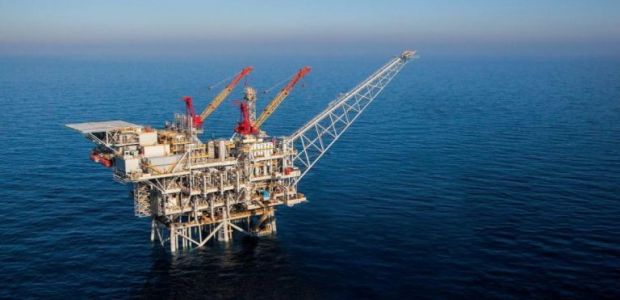US-Greece Deal: Huge LNG Regasification Terminal In Alexandroupolis
EDITOR’S NOTE (Nick Stamatakis). This project took a long time and was preceded by several related projects. Just a few years ago, the first load of American LNG was unloaded in Psitalia, near Pireaus, surprising everyone. Greece has been importing substantial quantities of natural gas from Russia and Algeria, so there was no need for expensive American LNG. I was a 22-yr old young student in Athens when the then prime minister Andreas Papandreou gave a historical response to US diplomats who were complaining that Greece was importing a lot of natural gas from the then communist Russia: “Bring me your gas at our border at a competitive price, and we will buy it from you!!”
Twenty years later, another prime minister, Costas Karamanlis, also sought to expand the Russian imports of natural gas with a Burgas (Bulgaria) to Alexandroupolis pipeline. The same port city is now hosting the LNG gasification terminal. The outcome of his efforts was an assassination attempt against him in the suburbs of Athens by the CIA!!
This background poses some serious questions: Why would America forcefully impose imports of US natural gas to Europe when it goes against basic economic principles? Europe’s economy has already been destroyed—its success was founded on cheap Russian gas. Doesn’t anyone think that such practices will lead to serious political backlash, as it is already happening in Germany and elsewhere? It is similar to Kamala Harris’s plan to impose price controls. Are we Americans going to apply socialist principles to the world economy and believe we are moving humanity forward?
And the final question: Greece has proven reserves of natural gas enough to supply the whole of Europe cheaply and through pipelines – without liquefication and regasification. EXXON MOBIL is already there in the South of Crete. Why is the US delaying the development of these huge Eastern Mediterranean oil and gas fields for years and years? The short answer is two-fold – to support their pipedreams. The DC “uniparty’s” pipedream was to push the “sharing” of Greek and Cypriot resources with Turkey to keep Turkey in NATO. And their other pipedream to sell American LNG ignores the facts on the ground and, above all, the market principles…
=================
New U.S-Greece LNG Deal Will Boost Europe’s Energy Security
By Alex Kimani – Sep 19, 2024, 6:00 PM CDT
- Venture Global, a U.S. LNG producer secured regasification capacity at an LNG terminal in Greece.
- The new South-North Vertical Corridor will shore up Europe’s energy security.
- Russian gas supplies to the EU have largely been replaced by U.S. and Norwegian gas.
Venture Global, a U.S. producer of liquefied natural gas (LNG) sourced from North American basins, has secured ~1 million tonnes per annum (mtpa) of LNG regasification capacity at Greece’s new Alexandroupolis LNG receiving terminal for five years, starting in 2025, Reuters reports, noting that the new South-North Vertical Corridor will shore up Europe’s energy security by allowing alternative supplies of natural gas to be imported into the region.
“This move further integrates our business by growing our assets across the LNG supply chain including LNG production, shipping and regasification. As a major point of entry for LNG into Central and Eastern Europe, this strategically important infrastructure will be a game changer for the region’s ability to diversify their energy and access a secure and reliable energy supply. Venture Global is proud to support these efforts as a strategic partner with volumes from both Plaquemines LNG and the future CP2 LNG,” Venture Global CEO Mike Sabel said in a press release.
Renewable Energy Displacing Gas In Europe
Norway and the U.S. have replaced Russia as Europe’s biggest gas supplier: last year, Norway supplied 87.8 bcm (billion cubic meters) of gas to Europe, good for 30.3% of total imports while the U.S. supplied 56.2 bcm, accounting for 19.4% of total. However, the U.S. is the biggest LNG supplier to Europe: last year, the U.S. accounted for nearly half of total LNG imports by the continent, marking the third consecutive year in which the United States supplied more LNG to Europe than any other country.
On a global scale, the United States shipped a record 56.9 million metric tons of LNG during the first eight months of 2024, surpassing 54.3 million tons from Australia and 53.7 million tons from Qatar during that period. That marks the second straight year that U.S. exporters have topped global export rankings.
Unfortunately, Europe has bought considerably less LNG from the U.S. in the current year, with shipments from January through August dropping by 22% Y/Y. The slowdown has largely been triggered by a sharp climb in European power generation from renewable energy sources, which remain a priority for Europe’s power utilities. Solar and wind power’s share of electricity generation in Europe jumped from around 16.4% in 2022 to 20.5% so far in 2024 while fossil fuel generation’s share dropped from around 44.6% in 2022 to 36.6% so far this year. As you might expect, coal-fired power has taken the biggest hit in Europe’s energy mix, although natural gas generation’s share has also declined, from around 26% in 2022 to 22% so far this year.
The latest Europe natural gas rally has lost momentum, with natural gas futures dropping below €35 per megawatt-hour, the lowest in seven weeks, thanks to warmer weather forecasts and ample gas inventories. Europe’s gas inventories are 0.1 bcm higher than the corresponding time a year ago however and 8.6 bcm above the five-year average. Storage capacity utilization for the entire continent stands at 93.4%; 95.6% in Germany, 94.9% in Italy and 91.4% in the Netherlands.
U.S. gas producers are currently going through hard times, with a 25% Y/Y drop in average LNG export prices during the first half of 2024 cutting revenues by $4 billion from the opening half of 2023 to $13.2 billion. That was the lowest half-year revenue total since the first half of 2021, and marks a more than $12 billion fall from the second half of 2022 when U.S. export earnings from LNG peaked.
By Alex Kimani for Oilprice.com

